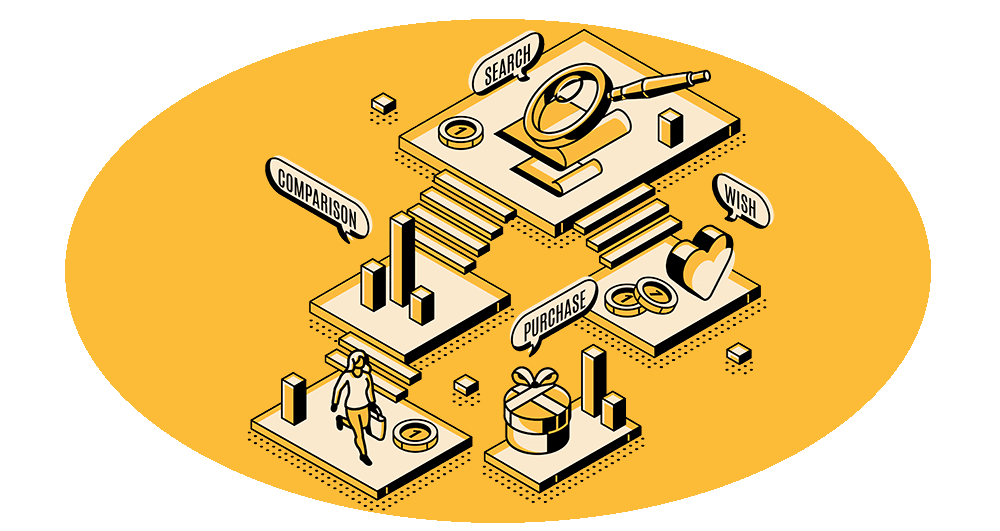Become More Customer-Centric in SaaS
A customer-centric approach in SaaS is not just advantageous — it’s essential for sustained success. Prioritizing customers ensures a product-market fit that fuels user engagement and loyalty, leading to higher retention rates and organic growth rates. A close connection with customers also provides insights for refining and expanding the product. By embracing this strategy, you can drive exceptional user experience with substantial revenue growth, even in competitive markets. To create a customer-centric approach within a SaaS company, it’s essential to make a customer-first mindset an integral part of your culture. Here are five ways you can become more customer-centric in SaaS.
1. Focus on In-Depth Customer Understanding
Achieving a deep understanding of your customers means going beyond basic demographics. You must look at motivations, behaviors, and challenges customers face. Start by conducting user research, using surveys and in-depth interviews. Such qualitative data can deliver valuable insights into pain points and the context in which customers use your product.
You can also develop detailed customer personas that represent segments of your user base. Personas should include information such as job roles, goals, challenges, and even personal preferences. Your personas serve as empathy-building tools for your team, helping them see from the customer’s perspective. Mao the user journey to visualize the entire customer experience. Understand the touchpoints and interactions customers have with your product, from initial discovery through onboarding and ongoing usage. A holistic view can highlight areas for improvement and opportunities to enhance customer satisfaction.
2. Communicate Proactively with SaaS Users
Building strong relationships with your customers relies on proactive, transparent communication (in good times and bad!). Establish clear channels for customers to get support and provide feedback. A responsive customer support team can address inquiries promptly and professionally.
When you release updates, communicate your changes clearly. Create user-friendly release notes, provide training, and offer documentation that explains the changes and their benefits. Transparent communication builds trust. You also may consider establishing a customer advisory board. Or you may be able to build a user community where customers can connect with each other and with your team.
3. Build Customer Feedback Loops
Collect, categorize, and analyze customer feedback from customer support interactions, surveys, and reviews. A customer-centric approach turns the feedback loop into an organizational process.
Identify recurring issues or enhancement requests. Prioritize ideas based on impact and effort. Regularly share your insights with the development team to ensure they understand customer needs. Letting customers know their input matters is a key part of the feedback loop. Acknowledge and communicate that suggestions are considered and integrated into your product roadmap. It helps keep customers engaged and invested in your SaaS product’s evolution.

4. Personalize & Customize the SaaS User Experience
If possible, tailor the product experience to the unique needs and preferences of each customer. Data analytics can identify patterns in behavior and preferences. Allow users to customize their experience within your software. For example, include settings for interface preferences, notifications, or feature accessibility. The more control you offer, the more empowered and engaged your customers will feel. Personalization goes beyond just the product itself. It should extend to your marketing efforts as well. Send personalized messages that reflect each customer’s interactions with your SaaS platform to enhance their experience and boost conversion and retention rates.
5. Measure & Optimize Customer Success
Customer success is critical for any SaaS company’s long-term growth. Start by defining clear KPIs for customer success, such as adoption rates, customer satisfaction scores, and net promoter score (NPS).
Track these KPIs closely (we include them in our OKRs) and use them to inform decision-making. If you notice a drop in user adoption or a decline in satisfaction scores, take proactive steps to address the underlying issues. It may require product enhancements, improved onboarding processes, or targeted customer support initiatives. Invest in a dedicated customer success team that can proactively assist customers in achieving their goals with your product. Develop onboarding programs that enables users to maximize the value they get from your SaaS solution.
Become More Customer-Centric in SaaS
Becoming more customer-centric in a SaaS company is a multifaceted effort. It entails seeking deep customer understanding, proactively communicating, Building structured feedback loops, personalizing experiences, and measuring & optimizing customer success. By wrapping these values into your company’s culture, you can forge stronger customer relationships, build loyalty, and ensure sustained growth.


Leave A Comment